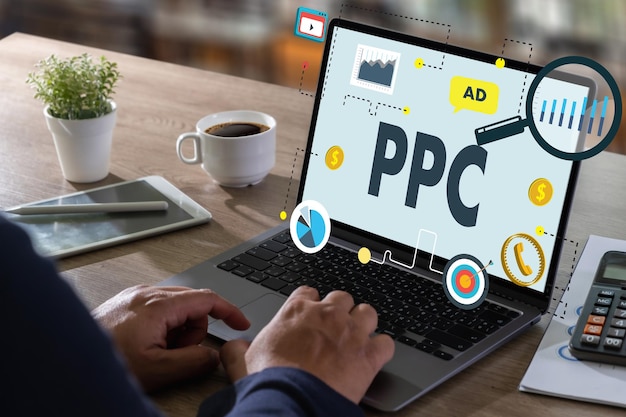
Introduction
In the realm of digital marketing, Pay-Per-Click advertising has emerged as a powerful strategy for businesses to drive targeted traffic and achieve increased conversions. With its ability to precisely target specific audiences and provide measurable results, Pay-Per-Click (PPC) Marketing has become a key component of digital marketing strategies. In this article, we will explore the potential of PPC marketing and how digital marketing agencies can leverage it to unleash the power of targeted traffic and drive higher conversions for their clients.
- Understanding Pay-Per-Click (PPC) Marketing: Pay-Per-Click (PPC) Marketing is an online advertising model where advertisers pay a fee each time their ad is clicked. Advertisers bid on keywords relevant to their target audience, and when a user searches for those keywords, their ads are displayed prominently in search engine results or on relevant websites. PPC platforms, such as Google Ads and Bing Ads, offer robust targeting options and allow businesses to control their budget, making it an effective method to reach the right audience.
- Precise Audience Targeting: One of the key advantages of PPC marketing is its ability to target specific audiences. Digital marketing agencies can create highly targeted campaigns based on factors like demographics, location, interests, and behaviors. By identifying the target audience’s characteristics and aligning the campaign accordingly, agencies can ensure that the ads are shown to the most relevant users, maximizing the chances of conversions.
- Keyword Research and Optimization: PPC campaigns rely heavily on keyword research and optimization. Digital marketing agencies should conduct thorough keyword research to identify the most relevant and high-converting keywords for their clients’ businesses. By incorporating these keywords into ad copy, landing pages, and campaign settings, agencies can improve the campaign’s visibility, relevance, and quality score, leading to better ad rankings and lower costs per click.
- Compelling Ad Copy and Call-to-Action (CTA): Creating compelling ad copy is essential for successful PPC marketing. Digital marketing agencies should craft ad copy that grabs attention, highlights unique selling propositions, and entices users to click. A strong call-to-action (CTA) is crucial to encourage conversions. By using persuasive language, relevant messaging, and clear CTAs, agencies can drive user engagement and increase the likelihood of conversions.
- Landing Page Optimization: PPC campaigns are only effective if they drive users to well-optimized landing pages. Digital marketing agencies should ensure that landing pages are designed with a clear focus on the campaign’s objective and provide a seamless user experience. Optimizing landing pages for fast load times, relevance to the ad copy, compelling visuals, and clear conversion paths can significantly increase conversion rates and return on investment (ROI).
- Conversion Tracking and Performance Analysis: PPC marketing provides valuable data and insights that enable digital marketing agencies to measure and analyze campaign performance. By implementing conversion tracking and utilizing analytics tools, agencies can track key metrics such as click-through rates, conversion rates, cost per conversion, and return on ad spend (ROAS). This data allows for informed decision-making, optimization, and the identification of areas for improvement.
- Ongoing Optimization and A/B Testing: PPC campaigns require continuous optimization to maximize their effectiveness. Digital marketing agencies should regularly monitor campaign performance, conduct A/B testing on ad copy, landing pages, and targeting options, and make data-driven optimizations based on the results. By refining targeting, improving ad relevance, and optimizing bids, agencies can continuously improve campaign performance and drive better results.
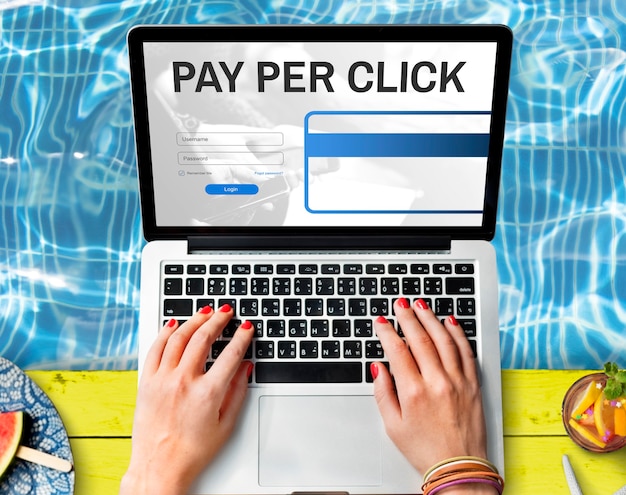
What Is PPC? An In-Depth Exploration of Pay-Per-Click marketing
PPC, is a form of online advertising in which you are charged each time a user clicks on one of your advertisements.
To visualize PPC ads, simply conduct a search on popular search engines like Google or Bing. You’ll notice ads prominently featured at the top of the search results page:
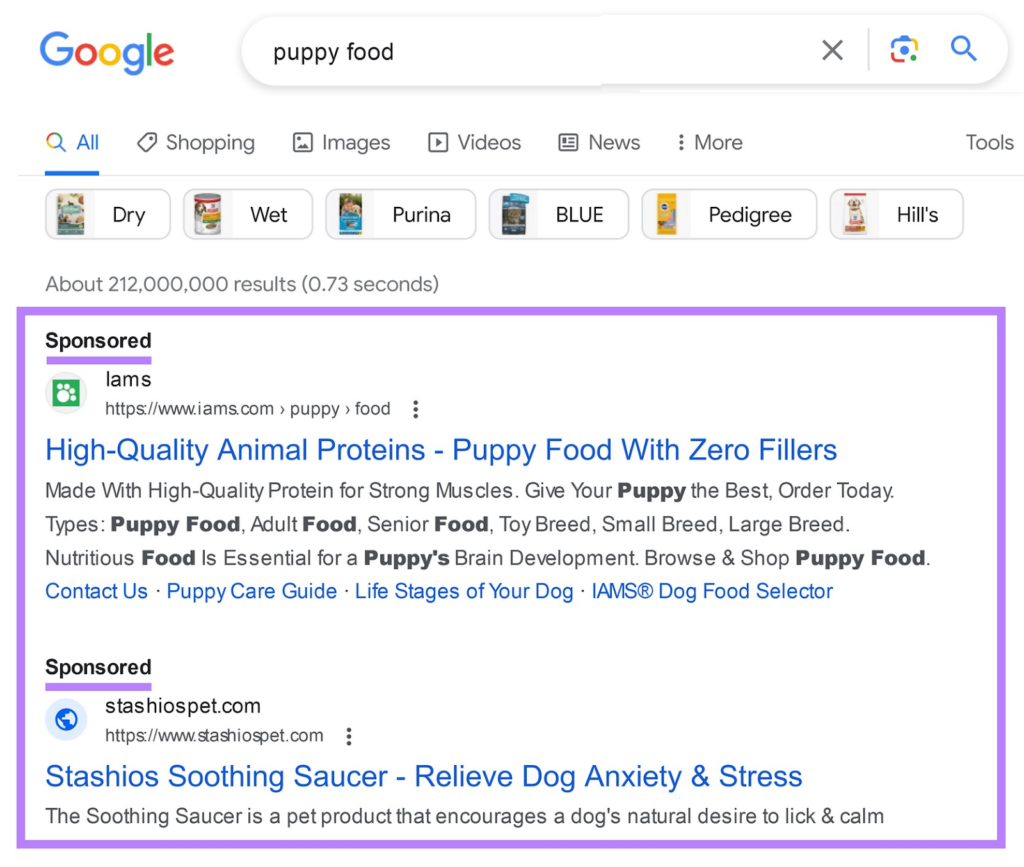
Observe the listings labeled ‘Sponsored’ at the top? Those are PPC search ads provided by Google Ads, Google’s advertising platform.
PPC is sometimes referred to as CPC, though there is a subtle distinction. Cost per click signifies the actual amount an advertiser pays for each click, while PPC represents the broader term for pay-per-click marketing.
You can run PPC ads across various platforms, including:
- Search engines like Google and Bing
- Social media platforms such as Facebook and Instagram
- Banner ads on websites
- Video ads on YouTube
- Online marketplaces like Amazon
Why is PPC Important?
PPC marketing plays a crucial role in attracting new customers and expanding your business. It accomplishes this by increasing your brand’s visibility among specific target audiences and directing them to high-value pages that align with your business objectives.
Let’s delve into what makes PPC such a valuable strategy:
PPC Ads Enable Precise Targeting PPC ads empower you to reach highly specific audiences based on precise criteria known as targeting. This ensures you communicate with the right individuals and avoid wasting your ad budget.
The specific targeting
options vary depending on the platform. For instance, Google Search offers different targeting options compared to Facebook. Here, you can observe how Google allows you to target users based on demographics, keywords, topics, and more:
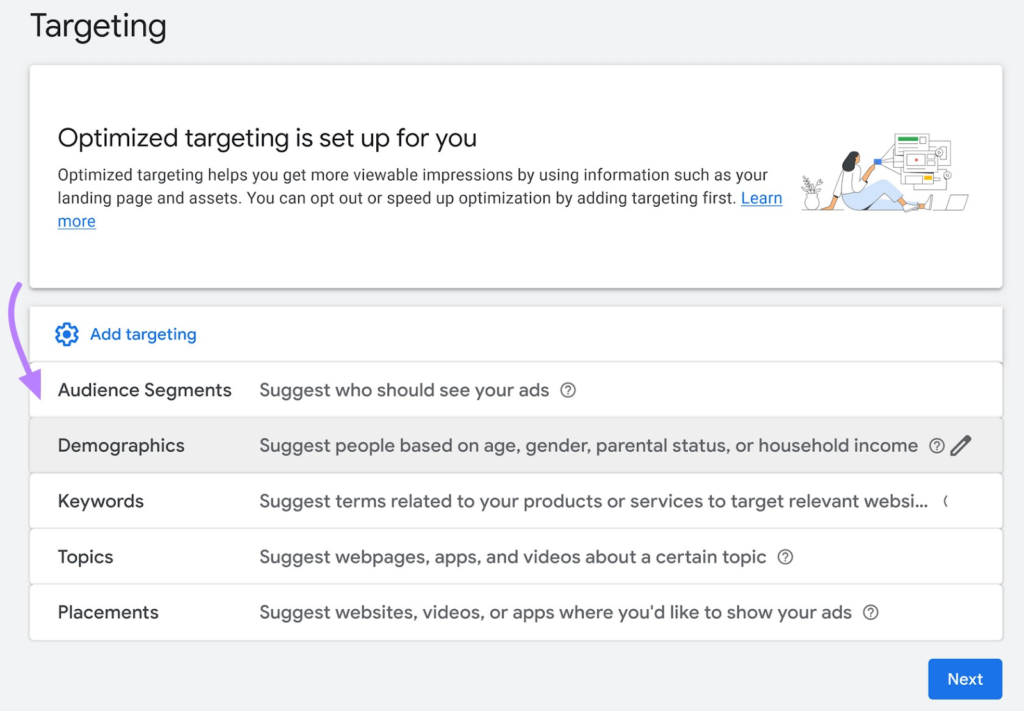
You can also focus on users who have previously interacted with your website or engaged with your brand. This strategy is commonly referred to as remarketing or retargeting.
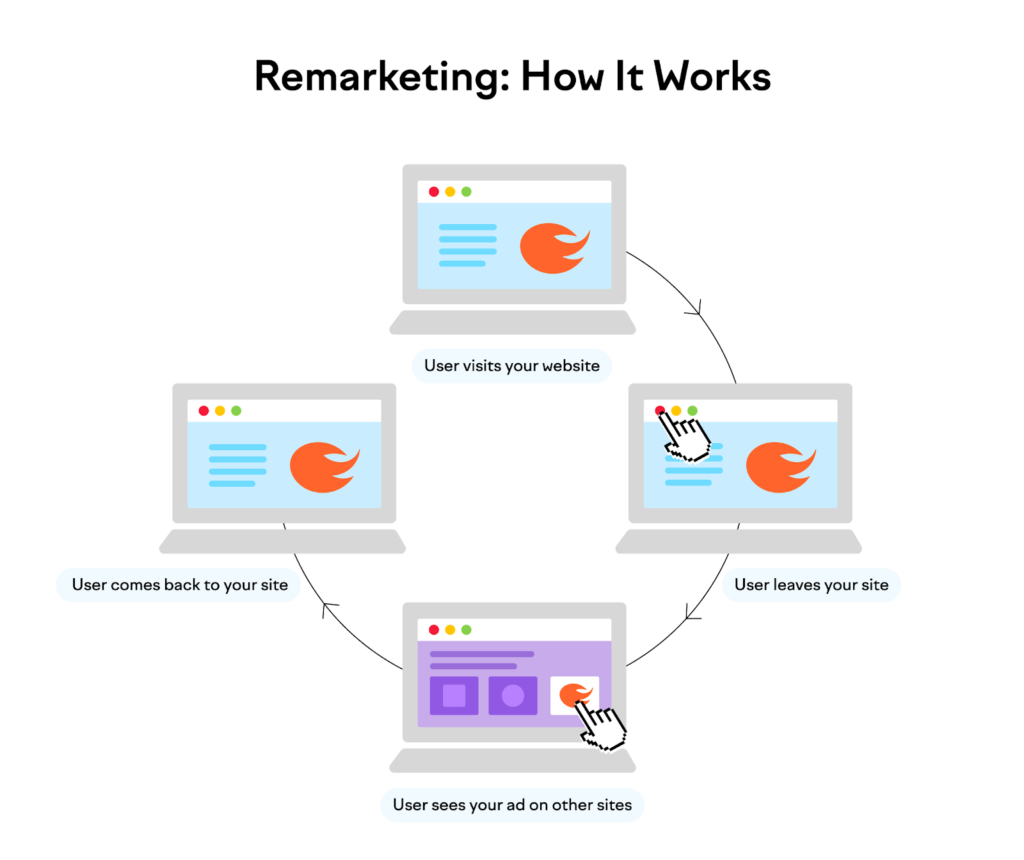
PPC ads deliver rapid results, allowing you to generate traffic on the same day you launch your campaign. This is significantly faster than the results achieved through search engine optimization (SEO), which may take several months to yield tangible outcomes.
To illustrate this, consider the following chart from Domain Overview, a tool that provides insights into competitors’ organic performance. It demonstrates the timeline it took for Lululemon to begin seeing positive results with their SEO efforts
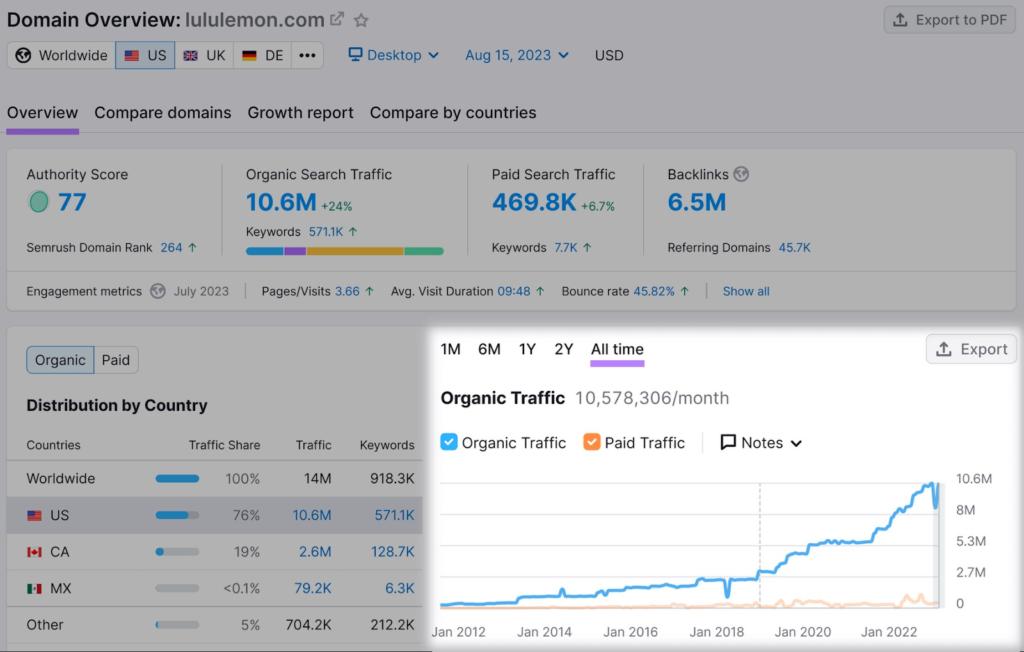
PPC ads offer cost-effectiveness by giving you full control over your budget. You can pre-determine both your overall campaign expenditure and the cost per click, with payments only incurred when a user clicks on your ad. Combined with precise targeting capabilities (discussed in more detail during our bidding discussion), this allows you to efficiently reach a relevant audience at a cost that aligns with your budget.
Moreover, Pay-Per-Click (PPC) Marketing is highly measurable and trackable, providing an abundance of data and analytics compared to traditional marketing methods. This enables you to gain insights into the performance of your ads. While you may never accurately gauge how many people viewed your billboard or read your magazine ad, PPC allows you to easily track the number of clicks on your ad and subsequent user actions, such as making a purchase. You can access real-time data on clicks and conversions directly within your chosen advertising platform.

You can utilize this data to make well-informed decisions for upcoming campaigns and fine-tune your strategies to achieve superior outcomes.
PPC campaigns are easy to manage and adapt.
You have the flexibility to set and modify maximum cost-per-click rates, allocate budgets, and make real-time adjustments to your overall strategy. This level of control empowers you to optimize your campaign promptly, such as increasing the budget for high-performing ads and pausing or revising underperforming ones.
Brand visibility
Furthermore, PPC not only generates clicks and conversions but also enhances brand visibility. Even when users choose not to click on your ads, they are exposed to your brand and message. The beauty of Pay-Per-Click (PPC) Marketing lies in the fact that you only incur costs when users click on your ads. This means that many people can be exposed to your brand without any expense unless they engage with your ad.
PPC and SEO work in harmony with each other. Running SEO and PPC simultaneously can maximize your presence in search engine results, potentially driving more traffic and sales. While SEO focuses on organic search rankings, PPC provides immediate visibility, creating a synergistic effect. You can identify your top-performing organic pages using Google Search Console by navigating to the “Performance” section and selecting “Pages.” This provides insights into the clicks and impressions for each page on your website, sorted from highest to lowest.
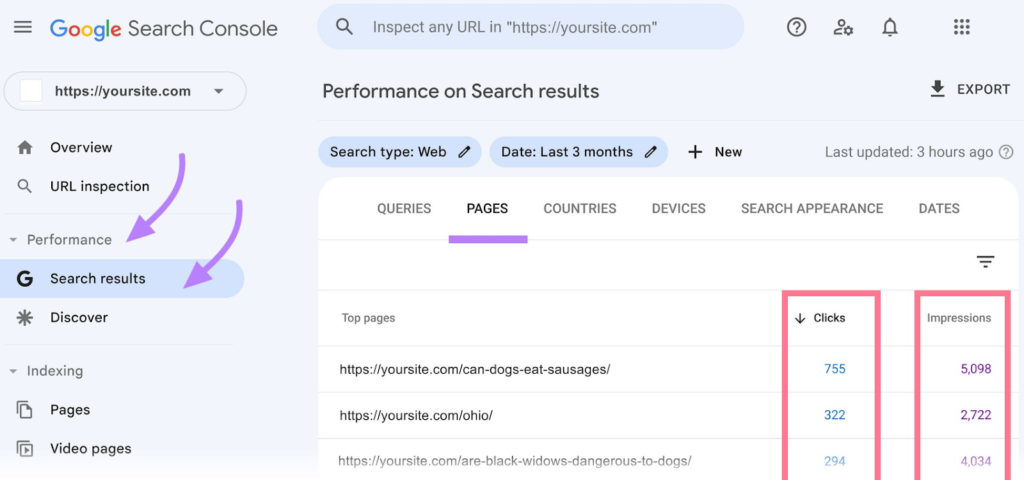
PPC vs. SEO
SEO and PPC serve as two distinct digital marketing avenues for businesses seeking to enhance their online traffic.
SEO concentrates on elevating your website’s organic search engine rankings, thereby increasing its traffic organically.
On the other hand, PPC encompasses paid search advertising as well as additional channels such as paid social media and display advertising
How Does PPC Advertising Function?
The mechanism behind pay-per-click advertising is quite straightforward:
- Register for an advertising account with Google Ads or your chosen platform for ad campaigns.
- Define your target audience, considering factors such as keywords and demographics.
- Set your total budget and the maximum amount you’re willing to pay for each click.
- Craft the text, images, or videos for your advertisements.
- Submit your ad to an auction alongside other advertisers competing for the same keywords or target criteria.
- Await the results of the auction, which determine which ads will be displayed and where.
- Pay when a user clicks on your ad.
While there are numerous platforms, ad formats, and strategies available, these core principles apply consistently
How the Google Ads Ad Auction Functions
When a user initiates a search, Google conducts an ad auction to determine which ads to display and in what order. The process hinges on Ad Rank, which is influenced by several factors, including:
- Bid amount (the sum you’re willing to pay)
- Real-time ad quality (incorporating expected click-through rate, ad relevance, and landing page experience)
- Ad Rank thresholds (the minimum price required to display your ad)
- Competition within the auction
- Context of the user’s search (including location, device, search time, query nature, other displayed ads and search results, and user signals)
- Expected impact of assets and various ad formats
Another vital concept is Quality Score (QS).
Quality Score, graded from 1 to 10 by Google, is assigned to each of your ads. It evaluates:
- Anticipated click-through rate (CTR) for an ad, measuring how many expected clicks it will receive relative to its frequency of display.
- Relevance of the ad to the searched query.
- Landing page experience, assessing the quality of the page to which the ad directs.
While Quality Score itself no longer influences the Google Ads ad auction, its three constituent components still do. Thus, it’s crucial to monitor your Quality Score to ensure optimal ad placements and pricing.
To check your Quality Score, access Google Ads, navigate to ‘Audiences, keywords, and content,’ and select ‘Search keywords.’ This will display an overview of keyword performance.
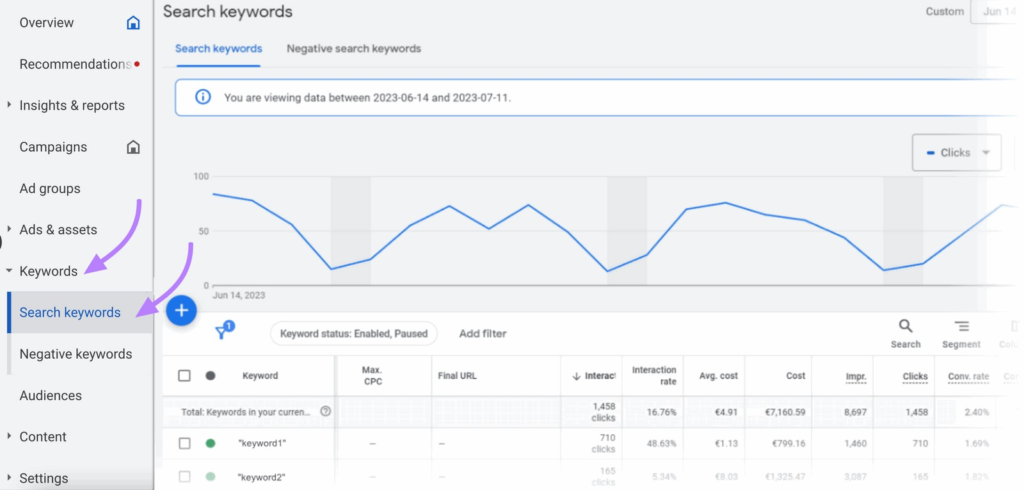
Campaign Budget
You have the flexibility to set the average daily budget for your campaign based on your spending preferences.
It’s important to note that Google Ads may spend up to double your daily budget on a specific day, but it will not exceed your monthly budget.
Since Google considers there are 30.4 days in a month, you can calculate your average daily budget using this formula:
[Monthly Budget] / 30.4 = [Average Daily Budget]

For instance, if you want to cap your monthly spending at $500, you can set your daily budget at $16.45.
Cost
The cost of your Pay-Per-Click (PPC) Marketing advertisements can fluctuate based on auction competitiveness and ad performance. However, you have control over your spending.
You specify a maximum CPC (Cost Per Click), which is the highest amount you’re willing to pay for each click on your ads. Keep in mind that the actual cost per click may be less than your maximum CPC. You only pay the minimum amount required to surpass the Ad Rank threshold and outbid competitors below you, potentially resulting in a lower expenditure.
Campaign Structure
Your PPC account is structured into campaigns, ad groups, and keywords, organized as follows:

Campaigns
Each campaign encompasses several ad groups.
Typically, your account will have a limited number of campaigns, unless it’s a sizable global brand.
Campaigns are typically organized based on specific objectives, targeting criteria, ad types, or budget allocation.
For instance, if you’re managing advertisements for an automobile dealership, you might establish separate campaigns for “used cars” and “new cars” to maintain separate budgets, targeting strategies, and other adjustments.
Ad Groups
Ad groups house multiple interconnected ads.
Consider them as distinct clusters of ads that are activated by keywords.
Within an ad group, you can incorporate numerous keywords, each with its designated match type.
Keywords
Keywords are the words and phrases you select as vital to your business. When a user searches for one of your chosen keywords, your ad has the potential to appear.
When you add a keyword to your account, you must specify a keyword match type. Match types enable you to govern which search terms trigger your advertisements.
Bidding Strategies
Google provides a variety of bidding strategies, allowing you to select the most suitable one based on your goals, whether it’s to prioritize clicks, impressions, conversions, or views.
If your aim is to optimize conversions, Google offers five Smart Bidding strategies that rely on AI to enhance conversions or conversion value:
- Target cost per action (CPA): This strategy empowers you to manage the cost you’re willing to invest in each desired action, such as a purchase or sign-up.
- Target return on ad spend (ROAS): This approach lets you define a profit goal for every dollar spent on ads, facilitating profit maximization.
- Maximize conversions: Here, the platform autonomously adjusts your bids to maximize the number of users taking specific actions on your website, like making a purchase or completing a form.
- Maximize conversion value: This strategy optimizes bids to drive higher-value conversions, such as larger purchases, extracting the most value from your ad budget.
- Enhanced cost per click (ECPC): With this bidding strategy, manual bids are automatically adapted based on the probability of a click leading to a valuable action or sale.
If your objective is to drive website clicks, consider these bidding strategies:
- Maximize clicks: In this automated bidding strategy, you set a daily budget, and Google Ads strives to generate the maximum possible clicks within that budget.
- Manual CPC bidding: This approach enables you to personally manage your maximum CPC bids, offering greater flexibility. For instance, you can opt to assign higher bids to high-performing ad groups or keywords.
If your focus is on enhancing brand visibility, explore a bidding strategy tailored for maximum exposure, such as CPM (cost-per-mille or cost per thousand impressions).
For video campaigns, like those on YouTube or the Google Display Network, CPV (cost-per-view) bidding is an option.
It may be worthwhile to experiment with several bidding strategies to identify the one that aligns best with your objectives.
Note: These strategies pertain to Google Ads, and other PPC platforms offer similar but distinct bidding alternatives.
Top Pay-Per-Click Platforms Numerous Pay-Per-Click (PPC) Marketing platforms are available, catering to various advertising needs. Some of the most prominent ones include:
Google Ads
Google Ads holds the position as the largest PPC platform, commanding a substantial market share of 28%.
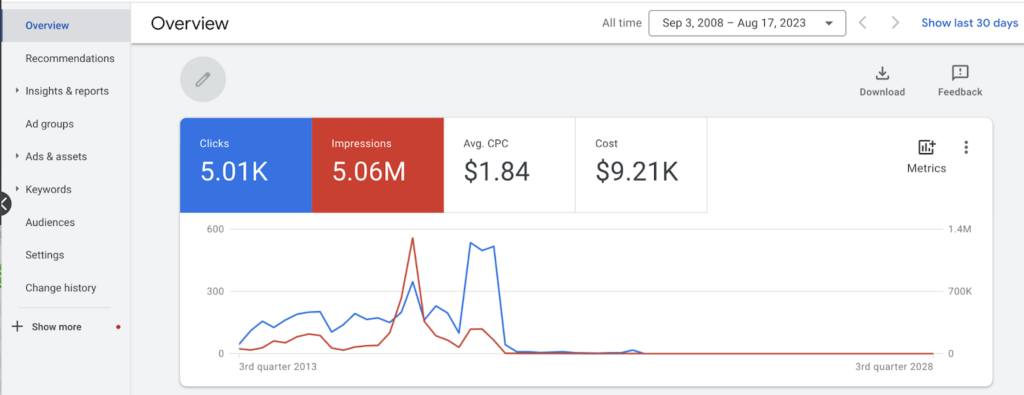
Google Ads comprises two primary components:
Google Search Network: This facet encompasses search ads displayed on Google Search, Google Maps, Google Shopping, and search partners featured on non-Google websites.
- Google Display Network: It facilitates the dissemination of display ads and videos on platforms like YouTube, Gmail, Blogger, and an extensive network of 3 million partner websites and apps.
Ads on Meta Platforms Meta boasts ownership of two of the most substantial social media platforms, namely Facebook and Instagram.
Utilizing Facebook Ads Manager, you can initiate PPC ad campaigns on both Facebook and Instagram.

Facebook Ads Manager provides extensive targeting capabilities that leverage demographics and user interests. This, coupled with the platforms’ vast user base, offers brands the opportunity to connect with an extensive and diverse audience of potential customers.
Varieties of PPC Ad Formats
When executing a PPC campaign, you’re presented with a plethora of ad formats to choose from, contingent on the platform you’re using.
Search Ads
Search ads prominently appear on the search engine results pages of platforms like Google when users are seeking specific information.
These ads are strategically displayed in response to user searches for pertinent keywords, ensuring that your ads are showcased exclusively to individuals actively seeking information related to your products or services.
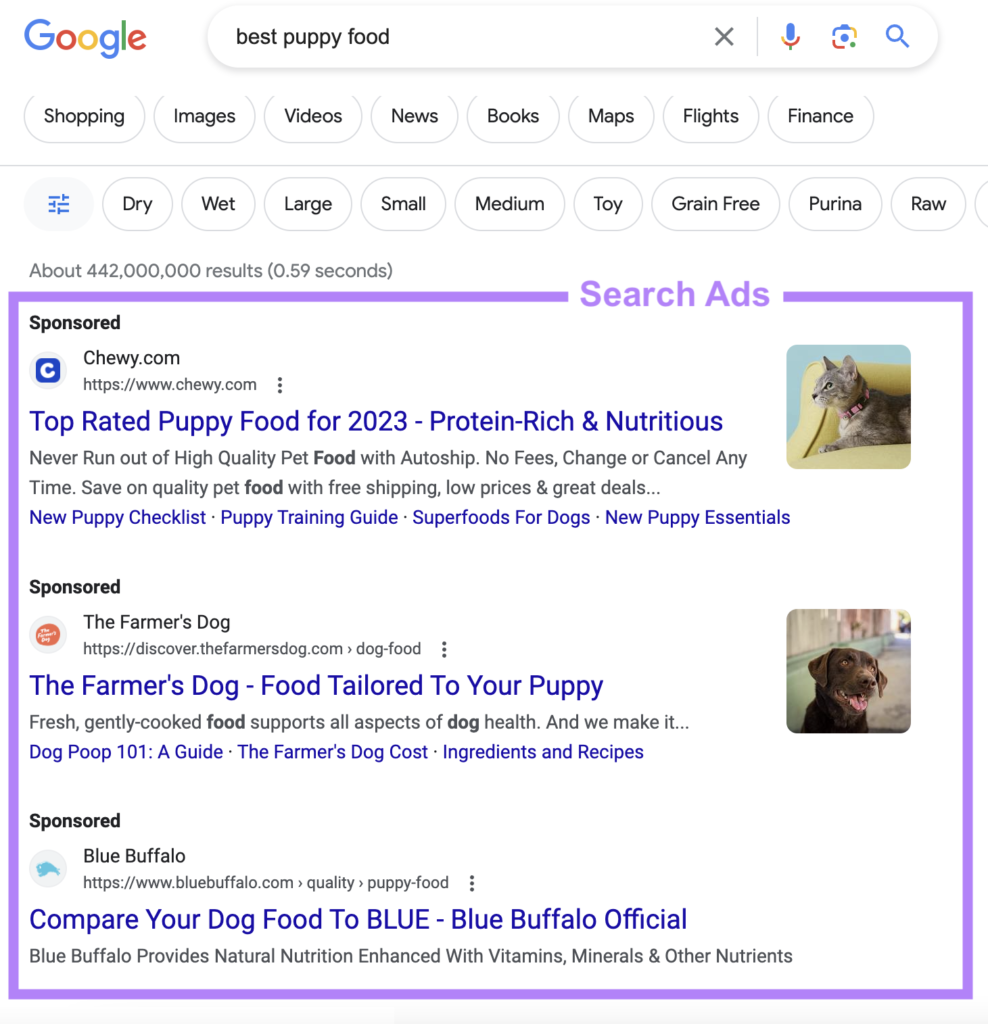
For instance, a search for “best puppy food” yields sponsored results from pet food companies, providing immediate visibility to your intended audience.
Display Ads
Display ads encompass banner or image-based advertisements that grace various websites within the Google Display Network and affiliated partner sites.
These ads can manifest at the top, bottom, side, or any other location on a webpage, frequently appearing on news websites, such as the example shown below:

Video Ads
Video ads materialize on websites across the internet and video platforms like YouTube.
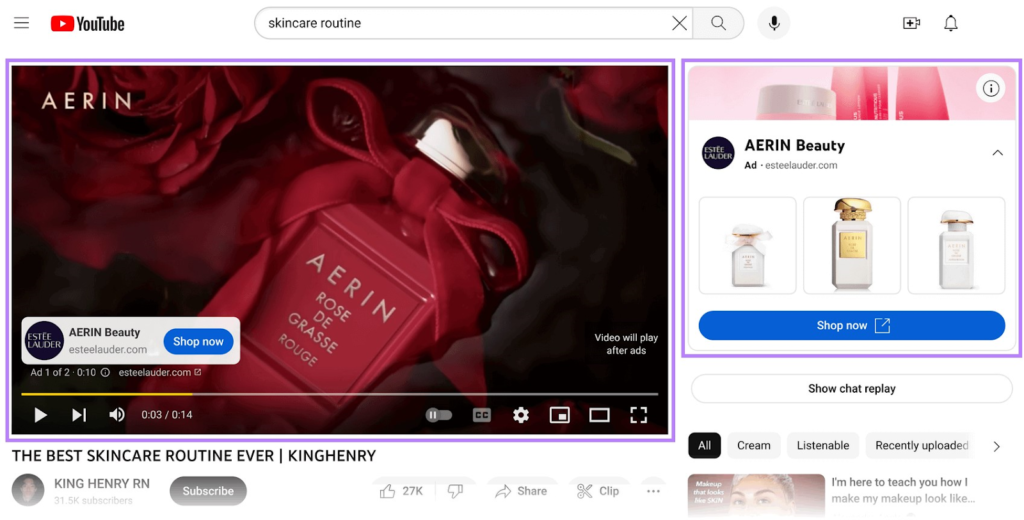
There exists a wide array of video ad types, with one common example being the pre-roll ad, which plays prior to the user’s intended video content.
Conclusion
Pay-Per-Click (PPC) Marketing offers immense potential for digital marketing agencies to drive targeted traffic and increase conversions for their clients. By leveraging precise audience targeting, conducting thorough keyword research, creating compelling ad copy and CTAs, optimizing landing pages, tracking conversions, and continuously optimizing and testing, agencies can unleash the power of PPC marketing. With its ability to deliver measurable results and drive tangible business outcomes, PPC marketing is a valuable tool in the arsenal of digital marketing agencies, allowing them to achieve remarkable success in the ever-evolving digital landscape
If you are looking one click here, contact us here
Follow us on Instagram
